
“Nothing Prepares You For This”: 30 Terrifying Moments Pilots Never Forgot
For most of us, flying is a routine experience. A seatbelt click, a gentle takeoff, maybe a little turbulence. But for the people in the cockpit, the sky can be a place of incredible beauty and sudden danger. Across multiple Reddit threads, pilots of all experience levels have opened up about the moments that shook them to their core: unexpected system failures, severe weather they never saw coming, near misses, medical emergencies, and those eerie, silent seconds when every decision counts.
In this collection, we’re bringing together some of the most terrifying real-life stories shared by pilots, offering a rare glimpse into what actually happens when things go wrong at 30,000 feet. Some accounts are quick flashes of fear resolved in minutes, while others describe long, harrowing ordeals that stayed with them for years.
#1
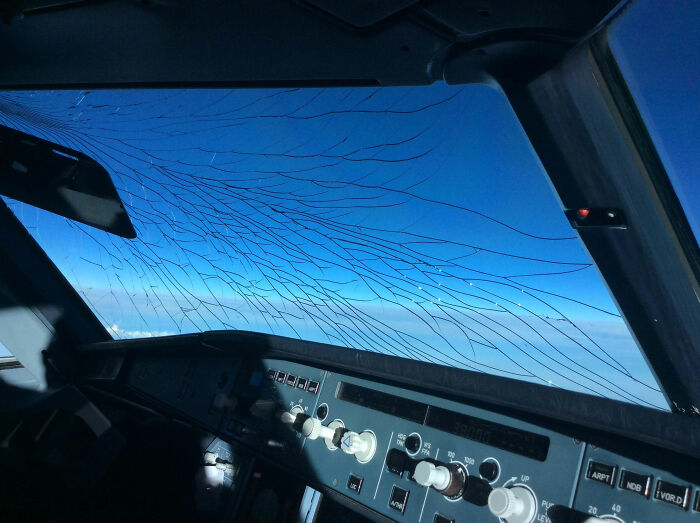
Image source: AviatorDave, ali_t88
My biggest moment was when my windshield shattered at 26,000ft. The passengers did know about this one because you could see right into the cockpit from the cabin.
There is a saying in aviation about learning to fly, “You start out with a full bag of luck and an empty bag of experience. The trick is to fill up the bag of experience before you run out of luck”.
#2
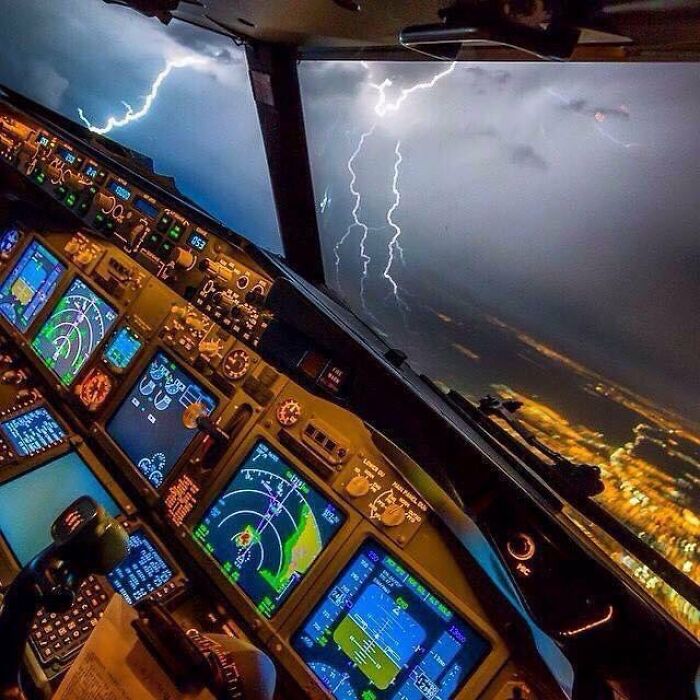
Image source: parc170, anonymous
Got struck by lightning the other day, that wasn’t fun. Scared the [hell] out of the both of us. Radar wasn’t painting anything either :/.
#3
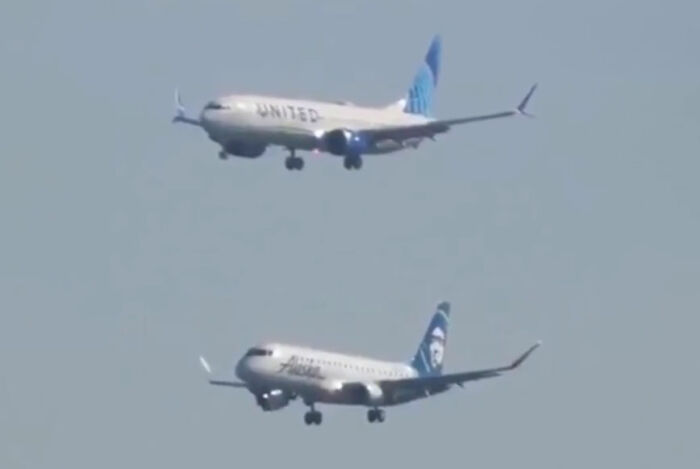
Image source: bob4240, BSincere
Yes am a pilot and CFI. Scariest moment was when on intro flight and coming back into land. Student is doing super well everything cool. We were cleared to land, number one, from 4 miles out. On short finals (less than a mile out) another plane appears over to top of us and lands on our runway. Trying to keep cool, I take the controls, ask tower what’s going on, start a go around, simultaneously side stepping to get out of their wake. Turn to my student and say, so shall we try that again?
#4
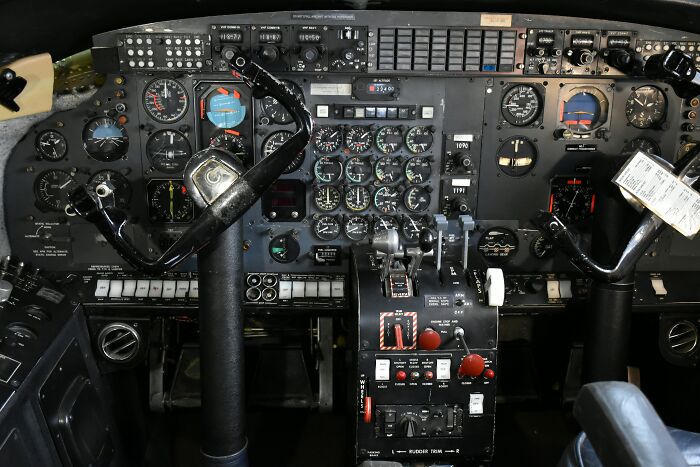
Image source: rowman25, Ries Bosch
Private pilot here. Flying a small 4 seater about a year after getting my license at 17 to take may parents to lunch at Harris Ranch in BFE central California. There’s a small runway next to a monsterous cattle farm that has a delicious restaurant that I swear they must walk the cow straight into the kitchen and out on a platter.
When we left Sacramento the seating configuration was my small framed mother and myself up front, and my 275 lb dad in the back. This led to a center of gravity to the rear situation that required me to set the trim forward to stay level our the nose would keep drifting up.
Flight to HR was uneventful and we had a wonderful lunch but for the return trip we decided that my dad would sit up front and my mom would move to the back. Stupid 18 year old me didn’t follow every step of the preflight checklist and I forgot to retrain the controls to neutral before taking off.
Started down the runway for takeoff and as soon as I hit speed I realized my mistake that with the new weight distribution the CG shifted forward, as well as the controls trimmed forward, I pulled back on the yoke to rotate and it didn’t budge. Never in my life has 1000ft of remaining runway suddenly appeared to reduce to nothing. To make things worse the end of the runway was an elevated road leading to an overpass with cars on it.
I literately wrapped both arms around the yoke and pulled back with all my strength to get the nose wheel to slightly lift off the runway and the plane slowly inches off the ground. The embankment to the road got closer and closer and I had visions of emergency crews having to scrape us off the surface, leftovers and all.
As we approached it became clear that we were going to just clear the road but I saw a pickup approaching the road and I wasn’t sure we weren’t going to collide. He saw us coming and slowed to a stop and I swear I was able to look straight in his eyes as we cleared the road.
When we were safely clear of trees and obstructions I was able to let go with one arm and reach down to turn the wheel that trims the controls.
As I was thanking my lucky stars to have survived the day my dad was muttering at me something like, “very funny. I didn’t eat that much.”
Both he and my mom assumed I was making a joke because my dad ate a huge lunch and thought I was acting like the plane couldn’t take off.
I never told them the truth about how close a call that it actually was, nor did I ever forget to reset the trim before takeoff.
#5
I’m an airline captain based out of LAX…
On a commercial aircraft, you generally have 3 sources of bleed air that take air from the engines (and a little device in the back of the airplane called the APU) and use it to pressurize the cabin. You can’t breathe the air at 35,000 feet, so the cabin is pressurized by these bleed air sources to a breathable altitude of at or below 8,000 feet. There are 3 sources because 1) redundancy increases safety and 2) you can still dispatch the airplane is one is inop because there are backups.
One of the bleed sources (on the number 2 engine) was already broken, so maintenance deferred it, indicating we were still safe to fly on the remaining two sources. Which is totally fine – you just take off with the APU running as a backup bleed source. Well on the takeoff roll, immediately after becoming airborne, our APU fails. Which leaves us with just one bleed source to pressurize the cabin; the bleed air from the number 1 engine. If that fails, we have nothing to keep the air inside the cabin pressurized to a lower altitude than the airplane is flying at; you won’t be able to breathe at high altitudes.
It’s a short flight, and we aren’t going up too high, so I’m optimistic that we can get up to our low cruising altitude, message dispatch and maintenance, and receive their agreement that the flight is safe to continue on one bleed source. I text our company a message describing the situation via ACARS, a satellite-based texting capability our aircraft has to communicate with people on the ground.
But they never had the chance to get back to us.
Passing through 25,000 feet, I feel the air getting sucked out of my lungs. I’m trying to inhale, but it isn’t working, and my lungs are emptying quickly. Unable to breathe normally, immediately my eyes shoot to the cabin altitude gauge, which is showing us at 8,000 feet cabin altitude and rising quickly. In fact, it is rising at the exact same rate of climb as our airplane…indicating the airplane has lost all pressurization capabilities and is depressurizing rapidly. At that instant, we get a warning chime and message on our EICAS (Engine Information and Crew Alerting System, essentially a computer screen that tells us when [things] go wrong) that says BLEED 1 FAIL.
With our Bleed 1 source now failed, our APU having failed on the takeoff roll, and Bleed 2 already deferred, we are completely out of ways to pressurize the aircraft. If we don’t descend to a safe altitude immediately, the cabin altitude will rise high enough that the air is no longer breathable. This is a serious problem.
Immediately I throw off my sunglasses and headset, and don my full-face oxygen mask and smoke goggles. It provides 100% pure oxygen under a forced flow, rated up to an altitude of 41,000 feet. My first officer does the same. This is the first thing you do because if the pilots die, there is nobody to fly the jet and everyone else dies. Then we immediately declare an emergency and initiate an emergency descent, nosing over to our maximum speed while deploying the speed-brakes to generate maximum drag. We receive clearance down to 10,000 feet and begin executing a 180 degree turn to go back to LAX.
ATC does a fantastic job vectoring aircraft out of our way…SoCal airspace is some of the busiest in the world, but we got priority handling all the way back to LAX. The cabin altitude nearly reached hazardous levels, but didn’t go high enough for the oxygen masks in the cabin to automatically deploy. It was definitely high enough that the passengers would have noticed, but wouldn’t have had a concrete idea of what was going on aside from “that’s odd.” The cabin also got quite hot because there was no more pressurized, conditioned air flowing to cool it off.
We landed at LAX on the longest runway with the fire trucks rolled to assist us, just in case. Fortunately, none of the passengers or crew reported any injuries from the sudden increase in cabin altitude. We parked at the gate and deplaned, and I made an announcement to the passengers about what had just happened, using small words and downplaying everything so as not to scare the [hell] out of everyone.
12 Chinese passengers on our flight were on a west coast tour, and they were very upset that their trip was inconvenienced by this emergency. No problem, I totally understand the frustration. So I spoke to their translator, who spoke in turn to her group, and I gave her the full and very detailed explanation of what happened. As I explained what happened, the expressions on these 12 passengers’ faces went from angry, to surprised, to fearful, and finally thankful. Before I walked away, all 12 of them bowed to me in respect. That was something I have never experienced before or since then in my entire aviation career.
We ended up swapping airplanes to one that wasn’t sick, and completed the flight as planned about 3 hours behind schedule. I slept well that night, and the passengers probably went on to complain about their flight being delayed several hours due to a “maintenance issue” :).
Image source: PlaneShenaniganz
#6

Image source: TRex_N_Truex, ariwoolf
Flocks of birds like to appear out of the grass when rolling down a runway for takeoff. It happens a lot more than passengers would like to know but usually it’s a non event. Every once in a while though that flock will appear right in front of us near rotation speed and we just hope they’re gone by the time we moving through that space.
#7
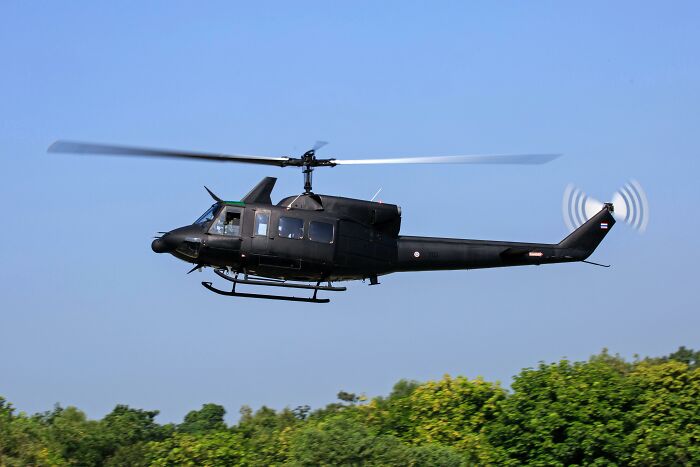
Image source: flyingiguanas, Somchai Kongkamsri
The first time I flew a plane, I nearly crashed into a helicopter I went heli skiing on the day before. For some reason they only operate on their own frequency so we didn’t know they were there, and they didn’t know we were there. The flight instructor took over and it ended up being fine. Quite a shock though.
#8

Image source: Kdog0073, Rachel Claire
I was giving my sister and a friend a tour of the Chicago skyline over Lake Michigan. We are all having a good time. Suddenly, the engine goes quiet… a nightmare especially because I only have one of them. The silence was noticeable and my sister starts looks at me and starts to panic. The engine comes back within about 3 seconds alive and well, and I head for the nearest airport.
In a small propeller plane, it is hard to hide the silence of the engine, but since it came back, I acted like nothing happened. I don’t think they realize how critical of a situation it almost was.
#9

Image source: anon, Christina & Peter
My dad had a wasp in the cockpit with him once, he said his first thought when he noticed it right after taking off was “oh, so this is how I [pass]”.
#10
Dad retired with 36,000 hours, closest disaster was a cockpit fire. If this doesn’t get buried which I think it will, I’ll get the details from him.
Edit: So I got the short story from him(not a fullblown fire as I had thought). He was supposed to fly from Orlando to Boston but as he was taking off he noticed that there was a lot of super hot air pouring into the cockpit. What had happened is instead of wiring the engine valve shut like the mechanics were supposed to, they wired the valve wide open. As I understand it, the engine valve usually automatically regulates the amount of hot air that the engine bleeds into the cockpit. However, the wiring they did made it so the maximum amount of hot air was coming in contuniously from the engine. He made an emergency landing in Jacksonville and by the time they landed they couldn’t touch the controls, they were using clothing as oven mits. He said he and his co-pilot were also completely drenched in sweat.
Image source: altabuse
#11
I was giving a ride to a friend in a rental Cessna 172F. It was late in the day and the sun was going down. The airport I was heading to was only about 15 nautical miles away but it was on the other side of a large body of water.
We taxi up to the run up pad and I test the engine like I do before every flight. Everything seems to look fine and normal. I taxi onto the runway, make my final checks, and proceed to take off. At that point I detect a small unusual vibration. I brushed it off like it was nothing. Small old airplanes vibrate all the time so it’s no surprise.
As I’m climbing out, I’m looking at the tachometer and I glance down at the oil pressure and it’s measuring lower than normal. I decide to turn base into an upwind (pilot talk for turn around while still in airport airspace) for the departure airport rather than riding it out over the lake.
We’re at about 1700 MSL (800 ft AGL) when the oil pressure falls below allowable limits. At this point I’m freaking out in my head because [things] are getting real fast. My passenger doesn’t know anything is up because I’m not saying anything. The last thing I need is some guy freaking the hell out while I’m trying to land the plane without a usable engine.
I calmly tell him, “We need to turn around.”
My assumption is that I’m [leaking] oil and I’m at a risk of fire so I get on the Unicom (Airport radio frequency) and declare an emergency landing. The others in the pattern exit and I end up doing right traffic to final. I pull the throttle to prevent any fire as I turn base to final while keeping enough airspeed to keep from stalling and crashing.
I end up doing the approach too fast and landed the airplane on the last 500 ft of the runway nearly running off the end. I pull to the taxiway and shut the engine down. Turns out the engine was grinding and ‘making metal’ on the inside.
Probably first time I was thankful for how excellent my instructors were when I was training.
Tl;dr: lost my engine during takeoff, saved the airframe, and my passenger had no clue what was going on.
Image source: bigdog927
#12
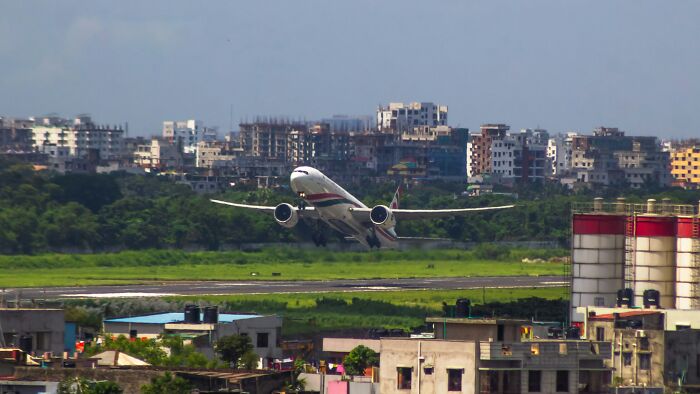
Image source: HarborMaster1, Bornil Amin
My father was a captain for Eastern Airlines and told a story about almost being at takeoff speed when another commercial jet taxied across his runway. He was going too fast to abort so he had to pull up early and cleared the other plane by feet (don’t remember the exact amount). His passengers had no idea but the other plane’s passengers saw everything. I don’t know what ended up happening to the other pilot, but my dad got an apology call from him that evening.
#13
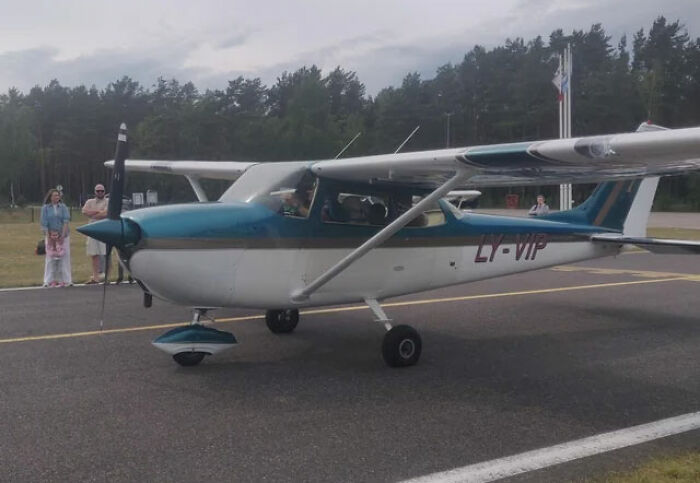
Image source: jfrye01
Anyway, I am a pilot with ~300 hours. I own a 1967 Cessna 172 (single engine, 4 seats), and I absolutely love my airplane. First flight after my check ride, I was flying my mom to visit my dad in another state. Up to this point, everything is going great. Smooth flight, no winds, not a cloud in the sky. My mom is sleeping in the back seat. We are descending into our destination when the plane starts shaking like crazy. Scanning my instruments, I notice an immediate RPM drop. The airplane is shaking so much I fear the engine will come loose from its mount. Luckily, there is an airport less than five miles away. I land, shut the engine down, and sit quietly, and calm my nerves. It is at this point I hear my mom remark, “Oh, we’re here…”. Turns out she had slept through the whole thing, and woke up as soon as I shut the engine down. I explained what had happened, and she was rather grateful she had slept through it!!
For the curious, my engine (a Continental O300) was nearing TBO and had a piston that had begun to disintegrate. $20,000 and an engine overhaul later, we were back in the air…
Edit: yes, that $20,000 repair was expensive, but it was not like I just had $20K lying around…I’m a broke college student…it took a year to pay it off…lol
2nd edit: Perhaps I should mention that we did indeed have a TBO fund, so over half the engine overhaul was paid for. It took me a year to pay off the rest of it.
#14

Image source: ketosoy, Rafael Cosquiere
My father was a pilot, he tells a story of “I only earned my paycheck once my the last 10 years of flying.”
You see, normally, the computers do most of the work of flying a plane. The pilots, largely and increasingly, are along for the ride.
The pilots are there for when things go wrong. They’re paid and trained to be on-hand emergency operator technicians.
They were flying a 767 ATL to Amsterdam when someone smelled electrical smoke. The autopilot computer actually caught fire. Copilot goes to into the belly with a fire extinguisher, Dad takes manual control over Halifax or Iceland (can’t remember which) and flies the plane to an emergency landing in Laguardia. Best part is my Aunt lived on Long Island and was hosting a fancy cocktail party that night. Instead of a hotel Dad decided to crash with Aunt and showed up in uniform with a hero story and drank the bar dry (his itinerary was cancelled and he was on his way home). My Aunt’s friends still talk about it.
Dad flew A4s in Vietnam and was known for his appetite for stunts and taking the harder itinerary. He found commercial aviation incredibly boring by comparison to flying tail through a valley at 500 feet taking fire from the hillsides. (The tail plane is an easier target because the gunners have already aimed when firing at the lead plane).
Tldr: Commercial pilots generally don’t have [these] moments, they generally have years of boredom punctuated with occasional “this isn’t and emergency, I’m trained for this moments. At least that’s how it is according to my Dad.
#15

Image source: anon, Frank Cone
It was a flight from Kansas to Oregon, and as we were midflight, a hawk dive-bombed the wing and DENTED it. The pilot announced the subtle thud as minor turbulence, but the crew knew what had happened. No one knew how the hell the hawk was flying so high. It was a smaller plane, so we only had one and a half dozen people(not counting us crew members). The dent didn’t actually meds with flight too much, but it’s a hell of a story to tell.
#16
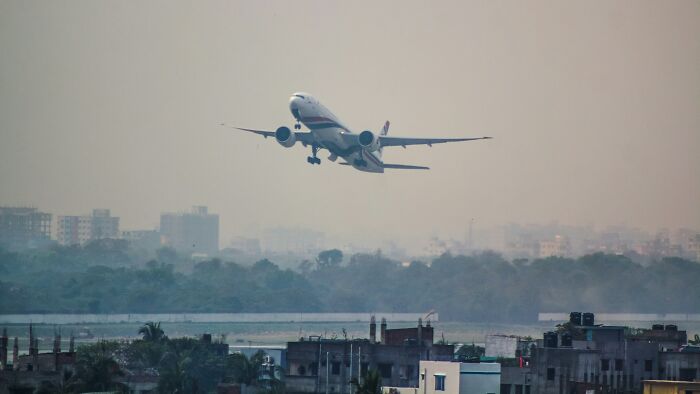
Image source: subhumann, Bornil Amin
I used to fly vintage biplanes and take people up on “joyrides” effectively. We would do aerobatics, let them fly it for a bit, and come back for tea and medals. We also did air displays and we did wingwalking (although my DA didn’t allow me to do those)
While its not your typical airline passenger transport, it is still commercial flying!
As these aircraft were built in the 30’s/40’s, there was several times where [things were going wrong], and as the cockpits are separate, they were blissfully unaware. Always was a chuckle at the end having to explain that what just happened wasn’t normal!
Some good examples:-
* Engine exploded during flight (big end failure, blew a hole in crankcase), landed in a field. Passenger was french and just thought landing in a field was what we did at the end… He couldn’t understand the mayday on the radio.
#17
Approaching Vr and someone starts to cross the runway you are on.
Turned short final on runway 36R and hear tower mistakenly give clearance for someone to roll on 26 we went around and right over the top of who had been clearance to roll.
Edit: These were two separate incidents. First was a non controlled airport the second was a controlled incident.
Image source: OldHoster
#18
Not a pilot, but I do work for an airline.
I was doing a project at our base in LGA, and had to fly home to my native Indianapolis, and my only option was to Deadhead with a few crew members from my airline back home.
I was sitting by myself in first class on an empty plane (save for 1 pilot, 3 flight attendants, plus the two guys flying the plane)
Upon landing, we hit the runway really hard and bounced. I didn’t think anything of it, as I’ve flown on airplanes hundreds of times.
However, the Captain flying the plane looked white as a ghost, and told me he almost flipped us.
Image source: anon
#19
CFI (Certified Flight instructor) here. While teaching my student how to do a cross country, we got blindsided by two pop-up thunderstorms. There was a 20 mile wide corridor to fly down back to base, according to flight service, so we cut our trip short and headed home. Played it off cool, said “This is a great time to practice diversion and good decision making” but I was terrified.
Image source: CaptValentine
#20

Image source: sophrosyne, Nikita Grishin
I’m not a pilot, but I was flying with a friend in a small BT-12. During the flight the engine sputtered and gave out. I didn’t think anything of it because I figured he was just testing something. Later, he told me that he genuinely could not figure out what happened and was freaking out for about 20 seconds until the engine fired back up.
#21

Image source: Theseblueskies, ijeab
I am a commercial airline captain on a newish embraer 175. Probably one of the scarier things I have had happen was when one of our cabin pressure control channels failed and we started to rapidly lose pressurization.
Pressurization is important because the air is so thin in the flight levels, specifically above 30,000′. The higher up you get the less “time of useful consciousness” you have, down to about 30 seconds. So it is a pretty scary thought and it is a problem requiring immediate action, usually a steep emergency descent, during which you will not hear from the pilots because we are suuuuuuper busy.
Our pressure controller has two channels and automatically switches to the second if one fails. We were flying along about to start our descent and briefing our arrival and our ears started popping, like mad. I looked over and the pressurization was climbing very fast. We started a steep, but not quite emergency descent, while I flipped the pressurization switch to manual and then back to auto. This manually switched the channel to the working one and we could continue without problem.
Pretty sure all the passengers noticed were their ears popping. It gave us about 80 seconds of a scare though.
The funniest part was that when we landed our maintenance control wanted us to “defer” the pressurization channel over the phone, meaning we will fix it later (generally a very safe way to get flights out on time with something minor or redundant broken). I told him I was going to have to insist that someone come over and actually look at the plane to say it was safe to fly.
Edit: I would like to add that the mechanics were NOT being reckless. These channels rarely fail, and having 2 is already a redundancy. They are absolutely able to defer them with very little concern for safety. I was being overly cautious in my request for an inspection and they accommodated me without question. A few mechanics out there must have very charged relationships with pilots, this is rarely the case in my workplace.
#22
Yay, story time. I’m an air traffic controller, for the record.
Had a pilot go NORDO (that’s when, for whatever reason, they aren’t on my frequency anymore. They didn’t get the right one, misheard, or their radios crapped out). It happens fairly often, and there are a number of things we can do to get you back in the right place.
This particular guy, however, went NORDO at precisely the worst time. He was going eastbound, which means he was at an odd altitude. He lost his radio, and his flight plan then had him turn southbound. That means he was supposed to be at an even altitude, which he obviously wasn’t.
There were about a dozen different planes going northbound that were at his altitude, so he ended up running one heck of a gauntlet through all these people as I was descending and climbing them to get them out of his way.
Then, apparently in an act of sheer ignorance on the pilot’s part, he decided to choose an even altitude all by himself, knowing he should probably be at one.
Remember all those planes I had to move out of his way? He managed to put himself right back into them. When you have closure rates of over 1,000 knots an hour, that’s not a lot of time to react to those things. At the end, my [bum] was clenched so tight that when I stood up, the seat came with me.
Image source: AnImbroglio
#23
I fly an older Dash 8, we have lots of little problems, sometimes the nav system blanks out, minor electrical issues. I fly in an area with non-precision ILS, sometimes we only fly VFR approaches, I was landing on a small dirt striip on Baffin Island when a cross wind pushed the aircraft off the approach and we had just enough power to go around, if the plane was a little heavier I may not be here to tell the story.
Image source: anon
#24
My dad once had one engine quit on his embraer. Didn’t even tell the passengers, if I remember correctly.
He also told me a story of a Super 80 (I think) that literally lost an engine. The pilots were like “engine 2 stopped working” but after a passenger spoke to a flight attendant, the flight attendant let the pilot know that they had in fact, literally lost it, it fell off. Can’t remember the deets. But I’d love to be the passenger in the back window seat and suddenly getting to actually have a view instead of only seeing an engine.
Image source: anon
#25
Flew tourists and odd jobs in Phoenix for a couple years in an R44. Going in for a landing at a remote site in the middle of the desert. Just as I was about to drop into a hover, drain my speed, I noticed just above my feet a trike motor paraglider just cruising under me only a couple feet above the ground and maybe 5 feet under me.
Very cool like, did a 180 and told pax I was worried about the landing spot, so I went pretty far in a different direction while watching [him] in my skid mirror. I quick flipped to a couple open channels to try to raise him and didnt get a reply so Im assuming he was without a radio.
Still to this day Im wondering how in the hell did he get in behind and under me so fast when I was probly cruising at 80mph? How in the hell did he keep that thing solid under my rotorwash? And why in the [hell] would it be a good idea to fly under a helicopter when it is about to land. A couple people Ive talked to have said he probably didnt even notice me. Im just gonna go to the grave believing some people wanna live on a razors edge…
Image source: anon
#26
I’m late to the party here, but someone might enjoy this. I’m an airline captain and on this particular day I was flying a CRJ-900 into the Washington National Airport. We were on an arrival but due to VIP movement (the president) they took us off of our route with the intention of having us enter a holding pattern over east Maryland.
As we were turning around on the holding pattern, think of it as a big oval with 10 mile sides, we noticed an aircraft coming down the same route we were just in, at our altitude, roughly 10,000ft. They were 20 miles away and we only saw a blip on our screen. Keep in mind that at 10,000ft we’re doing close to 300mph, so a closing speed of 600mph. We got sight of them as we got closer and we had to turn to fly on the other side of the oval.
By now we’re about 5 miles away, turning towards each other closing at 600mph, so I instinctively put my hand on the yoke and autopilot disconnect button. At about 3 or 4 miles, ATC issues a traffic alert and gives me an immediate left turn and to descend. So I click it off and start handflying. At that same moment the TCAS (Traffic Collision Avoidance System) starts yelling
“Traffic! Traffic! Climb! Climb!”
So I do what I’m trained to do and fly the TCAS maneuver.
We probably came within two miles, maybe less, from colliding. Not that we would’ve since I saw the Southwest 737 and would’ve evaded had we gotten closer, and the TCAS did its thing right.
So, since the TCAS told me to climb I got to 11,000ft within a few seconds and leveled off. Then what do you know? A second airplane! TCAS starts freaking out again and telling me to descend, so I did.
We explained the situation to ATC and the controller sounded extremely embarrassed and apologetic. So if the dude controlling Potomac sector where we fly the DEALE arrival that got us into two RAs within seconds of each other is reading this, it’s ok. We all have bad days.
Ooohh and when we were getting off some of the passengers asked what the commotion was about. The FA told them that its because we get paid by the minute (true) and we wanted to milk the clock since we were early, in a playful manner of course.
Image source: R4P70R88
#27
Navy helo pilot here:
I was doing some Deck Landing Qualifications last month, and me and my fellow pilots are going out to land on the boat for the first time with a senior IP. We have 4 pilots in our bird that need to qual, and I was the last to go. The other pilots, then me, get our day and night bounces, and on the last landing of the night, we call for the other people to come out and strap into the helo so we can fly back to base. Just before we get ready to launch from the boat, we get a #1 fuel pressure light, and our #1 engine starts acting wonky and starts flaming out. We troubleshoot on deck and eventually have to shut down the bird and wait for the ship to get in port so we can disembark. Had that #1 fuel pressure light come on literally 10 minutes before, or 2 minutes after it did, our helo would be in the middle of the Pacific Ocean and we would be scrambling out of the helo for our lives and a multi-million dollar helo would be at the bottom of the ocean.
TL;DR We had an air leak in one of our engines right before takeoff. If it happened any earlier or later than it did, I would be swimming in the Pacific ocean right now.
Image source: hotcoffeedotcom
#28
Dad’s a pilot, so I get to hear all of these.
Good one that comes to mind (mind you, he flies 737s for a major airline):
Getting ready to take off at night, he sees a plane about to land on the taxiway he’s waiting on, he immediately just starts turning on every exterior light on the plane. Other plane pulled out of final descent at like 500 feet.
Edit: Just talked to him on the phone about it. He said it was back when he was flying the 727, so about 15 years ago now. He remembers seeing the plane coming down, and the captain was looking back over his shoulder at another plane, so my dad starts throwing on all of the lights, at which point the captain turns around and starts asking him what he’s doing, and sees the plane, and then both of them literally just duck, and wait for something to happen, and after a couple of seconds, when it’s clear the plane wasn’t going to hit, they both sit up, and my dad starts trying to call the tower. The tower is just not responding at all for a bit, and then a lady comes on (the dispatcher had been a man) and basically says, “when you get to your destination, call this number.” And the dispatcher and the pilot of the other plane both lost their licenses.
Image source: Grabthelifeyouwant
#29
I’m a bush pilot in Canada. I was working the right seat of a Turbo Otter, my first ever flight in one so I was still getting used to the setup. We were taking off from a short strip in the middle of nowhere with 6 drillers in the back and a bunch of gear. Captain started the engine as I was just finishing up the passenger briefing. He started rolling down the runway as I was just getting seated. I thought he was just positioning the plane to prepare for takeoff, but then he gave it full throttle. I didn’t even have my seat belt or headset on yet. I’m focusing on getting this stuff on when I realize something isn’t right. Getting closer to the end of the strip, captain starts to panic as we aren’t getting airborne (his hands were shaking like mad and he kept reaching for things but he couldn’t figure out what was wrong, I think he was too busy looking at the trees and creek right ahead of us).
I realized the problem, he was in such a rush to leave that he didn’t do a pre-takeoff check. Propeller was still in full coarse (feathered on shut down), it should have been full fine for takeoff. I yelled/gestured to him the problem and immediately pushed the prop forward, engine had a huge surge and we just barely cleared the trees at the end of the strip. He acted like nothing happened for the rest of the flight. We didn’t even speak a single word to each other. I suspect none of the passengers even realized what had happened and how close we were to being another statistic. When we got back to the airport I told him I was leaving, packed my bags and never looked back.
Image source: anon
#30
I wasn’t the crew on either, but my service had 2 pretty severe bird strikes within several weeks of each other. One was a hawk of some kind and the second was a duck. The duck strike happened with a patient loaded, evidently just as the pilot was flipping his NVGs up. The duck came through the windscreen and went to smithereens along with all the plexiglass. I helped clean up the back of the helicopter later, and it looked like a duck had swallowed a duck of lit dynamite. The strike also happened at the exact moment the med crew had pushed a medication that relaxes all the muscles in the patient’s body (including breathing muscles), and in spite of the chaos they continued their procedure and successfully controlled the patient’s airway. The pilot also continued the flight in spite of being covered in duck blood/guts/feathers, as well as his own blood from his broken nose. The crew (and the other birds strike crew) received commendations for their calm composure under the circumstances.
It’s pretty mind boggling the damage a several pound bird can inflict.
Image source: atashworth





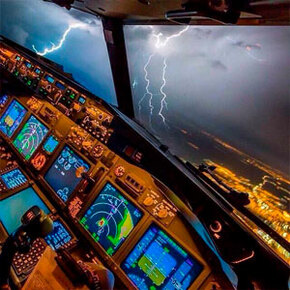













Got wisdom to pour?